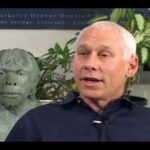Organisms inherit a set of environmental regularities as well as genes, and these two inheritances repeatedly encounter each other across generations. This repetition drives natural selection to coordinate the interplay of stably replicated genes with stably persisting environmental regularities, so that this web of interactions produces the reliable development of a functionally organized design.
Entropy is the enemy of organization. Selection is the only known counterweight to the tendency of physical systems to lose rather than grow functional organization. This means that the individually unique and unpredictable factors in the web of developmental interactions are a disordering threat to normal development. As a result, selection built anti-entropic mechanisms into organisms to orchestrate transactions with environments so that they have some chance of being organization-building and reproduction-enhancing rather than disordering.* here for more
Does genomic imprinting and the potential for cross-generational epigenetic inheritance select for systems that regulate development across generations? To find out, see:
Tooby, J., Cosmides, L. & Barrett, H. C. (2003). The second law of thermodynamics is the first law of psychology: Evolutionary developmental psychology and the theory of tandem, coordinated inheritances. Psychological Bulletin, 129(6), 858-865. PDF
Successful self-assembly is the first adaptive problem to confront each organism, yet sexual recombination ensures that each developmental process begins in a genetically and biochemically unique and novel individual, a problem that neural development must circumvent if the brain is to have a species-typical architecture. How does the developing brain build computationally precise information-processing mechanisms, despite genetic noise and developmental insult? (Will the answer to this question inform neural repair therapies? Do the same circuits end up in different topographical locations, explaining individual variations in fMRI activation?) An approach to this problem has surprising links to aesthetics…see:
Tooby, J. & Cosmides, L. (2001). Does beauty build adapted minds? Toward an evolutionary theory of aesthetics, fiction and the arts. SubStance, Issue 94/95, 30(1), 6-27. PDF
On evolutionary psychology and cognitive development, see:
Cosmides, L. & Tooby, J. (1994). Origins of domain-specificity: The evolution of functional organization.In L. Hirschfeld & S. Gelman (Eds.), Mapping the Mind: Domain-specificity in cognition and culture. New York: Cambridge University Press.
On cognitive development of:
a predator-prey inference system: click here
theory of mind system: click here
kin detection system: click here and see:
Lieberman, D., Tooby, J. & Cosmides, L. (2003). Does morality have a biological basis? An empirical test of the factors governing moral sentiments relating to incest. Proceedings of the Royal Society London (Biological Sciences), 270(1517), 819-826. PDF
*For a detailed explanation of how natural selection creates an environmental inheritance to mesh with the genetic inheritance, see:
Tooby, J. & Cosmides, L. (1992). The psychological foundations of culture. In J. Barkow, L. Cosmides, & J. Tooby (Eds.), The adapted mind: Evolutionary psychology and the generation of culture. New York: Oxford University Press.
Tooby, J. & Cosmides, L. (1990). On the universality of human nature and the uniqueness of the individual: The role of genetics and adaptation. Journal of Personality, 58, 17-67. PDF






